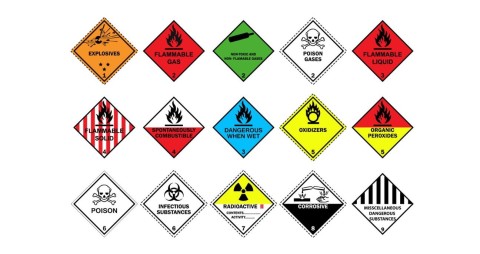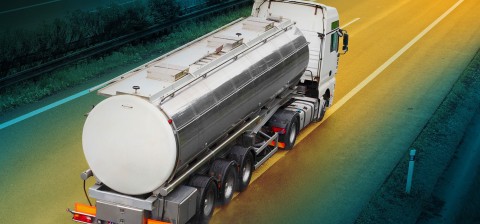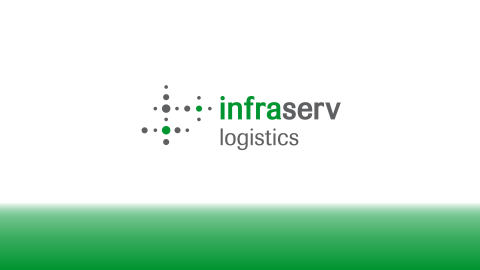Important changes to dangerous goods regulations
Put this challenge in our hands – successfully manage dangerous goods challenges
Regulations on the transportation of dangerous goods change every two years. And that time has come again: New regulations on transporting dangerous goods on various modes of transport come into force on January 1, 2023. In this cycle, the changes are quite extensive and complicated. But never fear: We won’t bore you with all the nitpicky details in this article. Instead, we have a very simple recommendation: Put your dangerous goods challenges in our hands. We will take your business farther.
Substances, mixtures and products with harmful, explosive, flammable or otherwise dangerous properties are known as “hazardous substances”. Handling them – e.g. producing, processing, using, storing, decanting and offtaking them – is regulated by hazardous substance law.
The moment a hazardous substance is transported, whether by road or otherwise, it generally becomes a dangerous good. There are nine different classes of dangerous goods, each containing multiple subclasses, depending on its composition and the type of risk involved.
Dangerous goods are subject to entirely different legal frameworks: One of them, the ADR, is an abbreviation of the French name for the “European Agreement concerning the International Carriage of Dangerous Goods by Road”. The RID, in contrast, is short for the French name of the “Regulations concerning the International Carriage of Dangerous Goods by Rail”. Both of these regulations are updated every two years. Other international regulations govern the carriage of dangerous goods by air, sea and inland waterway.
In everyday personal use, the regulations do not apply to dangerous goods that are packaged for retail and intended for personal or domestic use or for sports and leisure. Consumers who own fireworks, barbecue propane tanks and other hazardous items usually just have to follow the manufacturer’s instructions and use common sense. Professional-scale dangerous goods logistics, on the other hand, is much more complicated. Breaking the rules can result in stiff fines up to EUR 50,000.
Navigating a minefield
Dangerous goods management can be a minefield for the uninitiated: Potential mistakes range from defective vehicles and personal protective equipment to incorrect load securing and inadequate labeling all the way to violations of the extensive documentation requirements. Interestingly, far more mistakes are made when transporting general cargo than tanks. For example, we monitored around 21,000 vehicles at Industriepark Höchst in the 1st half of 2018: The error frequency was only 1.7 % in tank transportation but 11.2 % in general cargo transports. The difference probably comes down to heightened risk awareness among road tanker drivers, resulting in greater professionalism.
The severity of complaints has been continually increasing overall, especially in road safety. Language and communication problems make inspections more difficult and time-consuming to do.
The increase in violations has also been driven by an obvious lack of safety awareness among some drivers and carriers. This is particularly evident during inspections of smaller carriers, many of whom are based in other countries and are blithely unaware that some or all of their cargo is subject to dangerous goods laws.
Let Infraserv Höchst handle it for you
However, language comprehension problems are not the only reason why some providers may feel lost in the thicket of regulations – here, for example, is a tiny extract from the new ADR 2023:
“5.4.1.1.5: Special provisions for salvage packagings, including large salvage packagings, and salvage pressure receptacles
“When dangerous goods are carried in salvage packagings in accordance with 4.1.1.19, including large salvage packagings, larger size packagings or large packagings of appropriate type and performance level to be used as a salvage packaging, the words “SALVAGE PACKAGING” shall be added after the description of the goods in the transport document. “When dangerous goods are carried in salvage pressure receptacles in accordance with 4.1.1.20, the words “SALVAGE PRESSURE RECEPTACLE” shall be added after the description of the goods in the transport document.”
Of course, not everyone wants to wade through 1,000-plus pages of dangerous goods legalese. For them, Infraserv Höchst offers help. As the operator of Industriepark Höchst, we already have a high-performance logistics center. We are thus perfectly positioned to provide a full range of services for all our customers’ dangerous goods needs: from safe storage to customized global transport solutions to a wide range of services, up to and including dangerous goods and customs management.
Our park’s trimodal port knits together the transport modes of water, road and rail. Connections to nearby Frankfurt Airport let you make deliveries to the entire world. To make that happen, we work closely with experienced, long-standing forwarding partners. Plus, our Commercial Vehicle Center not only services our own vehicles but is also available to external customers.
Helping customers help themselves
We also advise and assist other logistics providers: Our practical e-learning and classroom courses , tailored to their specific needs and taught at the industrial park or their location, help companies who want to keep employees prepared for the rigors of the international logistics business. Our instructors have decades of experience and draw on their in-depth expertise to maximize the benefit to our logistics partners.
Just a small selection from our training portfolio:
- We train “authorized persons” for road (ADR) and rail (RID).
- We also provide special air transportation courses for target groups such as shippers and packers of dangerous goods.
- In addition, we teach managers about their liability and responsibility for dangerous goods.
- Our services also include regularly updating the latest rules and regulations.
Do you have a dangerous goods safety advisor?
Every company involved in the carriage of dangerous goods that is assigned duties under relevant dangerous goods regulations has to have at least one dangerous goods safety advisor, who must be appointed in writing. This obviously increases the workload for your crew. Fortunately, your dangerous goods safety advisor does not have to be on your payroll. You can outsource this function. To someone like us.
As external consultants, our dangerous goods safety advisors will report to your plant managers or senior executives. They will ensure constant regulatory compliance, prepare legally watertight documentation for any audits and work with you to develop an effective organizational structure for the long-term execution of dangerous goods management.




